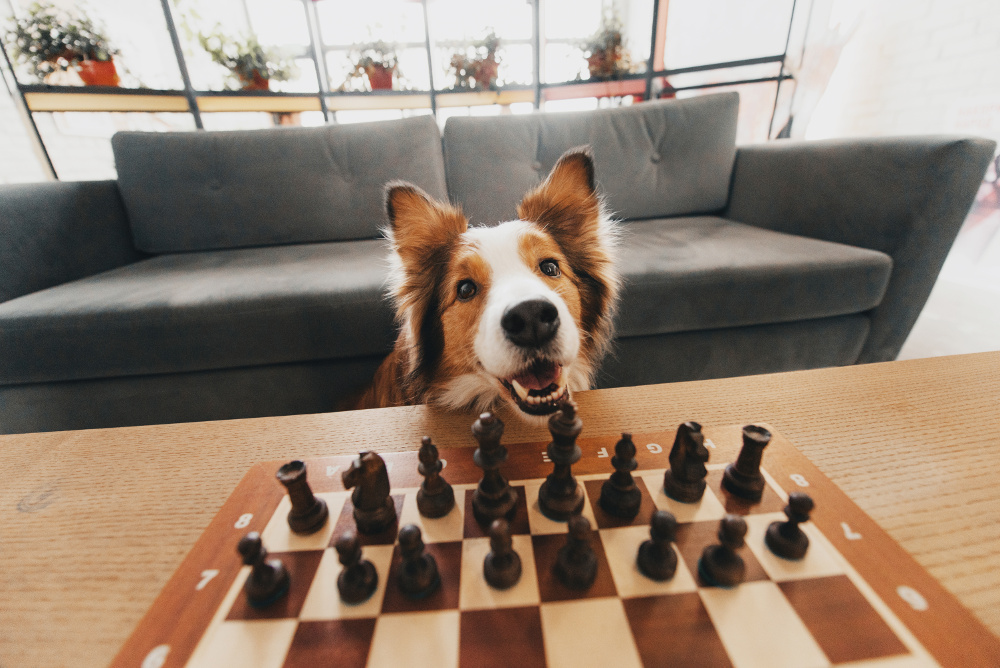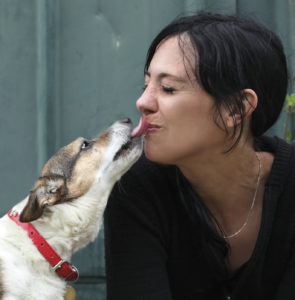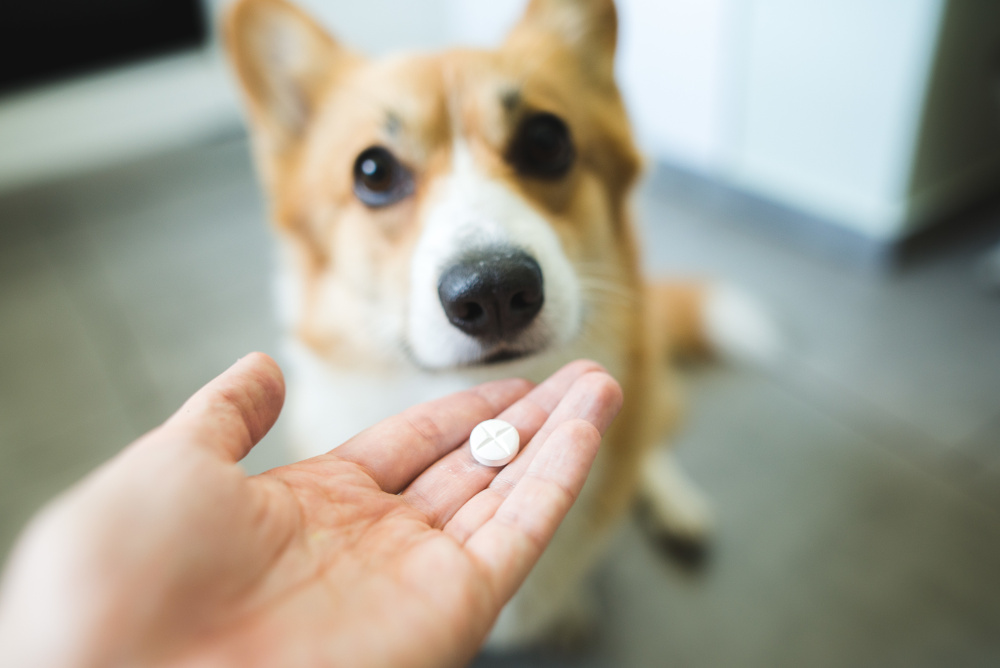
A Training Gym for Dogs • An Academy for Dog Trainers


The difference between a well-exercised dog and a bored dog can be striking. Where’d my nice-mannered, calm companion go? And who does this whirling dervish belong to? Sometimes you just can’t get the dog out—inclement weather, personal or public health conditions, or canine injury can all get in the way. Try these measures to keep your dog’s excess energy from driving you both crazy:
A rousing round of hide-and-seek, fetch, tug, or chase can provide physical exercise when a walk isn’t in the cards. And playing together is a great way to deepen your bond, too.
Purchased or homemade canine puzzle toys that require Fido to figure out how to get at a tasty treat can replace physical exercise with mental exertion—and keep your dog busy for hours. Search “dog puzzle toys” or “canine enrichment” online for endless ideas.
All it takes is a commercial break while watching your favorite show to do a few things to work your dogs brain. Try dog push-ups, heel exercises around the room, watch games, etc. The short 2 minutes during the break will give your dog some much-needed stimulation.
just to name a few!
Click here to check them out and sign up!
 The Human-Dog Bond
The Human-Dog BondYou’re not imagining it. Your dog really does understand what you’re feeling.
Dogs can’t read our minds, no, but when it often seems like they do, it’s because of a special connection between our two species that’s increasingly well understood. Dogs don’t just seem attuned to our emotions. They are.
Eye-track studies of dogs have shown that they read human faces for emotional cues in the same way we ourselves do. No other species do this, not even chimps. Scientists speculate that this skill has evolved in dogs to enable them to communicate with us on an emotional level. To better understand us. Which makes sense. When you rely on humans for your survival, there’s obvious biological advantage to reading their moods for signs of intentions, impending danger, etc.
The same goes for barking. Wolves rarely bark, and when they do, it’s to warn other pack members. Dogs, on the other hand, possess an impressive vocal repertoire that spans yowls, yelps, grumbles, whines, acoustic sighs, and many types of barks, suggesting another trait dogs may have developed exclusively to strengthen their teamwork with humans. This goes beyond utilitarian purposes like herding and protecting our livestock. Arguably, dogs have learned to speak a second language specifically to support their bond with us.
And the connection goes both ways: We’ve become skilled interpreters of barks. In experiments in which researchers played recordings of dog barks to dog guardians, they were capable of distinguishing between request barking, anxious barking, territorial barking, and other kinds, without seeing the dog’s body language or the situation. We use the tonality, frequency, and interval of barks to decode the message.
So, the science backs us up: We do indeed have a special bond with dogs. It’s so strong that we mostly take it for granted and lump dogs in with the rest of the family—because they are family. But dogs are not human. They are remarkable, adaptive creatures that have evolved in partnership with us in a way no other species have. And that’s pretty special.
 Easier walks with your dog are just a pipe dream for some. But can that be changed?
Easier walks with your dog are just a pipe dream for some. But can that be changed?
Can you get to a point where you not only enjoy, but look forward to your walks? Yes you can!
Here’s some expert tips on how.
Walks should be enjoyable and pain-free, for you and your dog both. Use humane no-pull equipment that employs natural counter-balance approaches to curb pulling without the use of pain or the risk of tracheal damage. There are many choices on the market these days. Ask a positive reinforcement trainer to help you choose the option best suited to your dog’s body and snout shape, and her pulling behavior and intensity.
Be on the lookout for cats, birds and small animals, other dogs, and toddlers who could get knocked over by a high-energy pooch. Ask for your dog’s attention, or cross the street or wait out of sight behind a parked car if needed.
Carry treats or a favorite toy to reward pleasing manners like sitting at curbs, not barking at other dogs, not chasing birds, polite greetings of friendly humans, and loose-leash walking. Any behavior you reinforce is going to happen more often. In other words: If you like it, reward it.
If your dog’s workout regiment amounts to a stroll around the block twice a day, surplus energy and under-stimulation will make it tough for him to behave when you take him out and about. The remedy? Amp it up. Find ways to allow him off-leash runs or playtime with other dogs, throw balls or Frisbees, take long hikes, hire a dog walker, or use a doggie daycare. The more exercise your dog gets, the more calm and attentive he’ll be.
If your dog is very challenging to walk, consider hiring a trainer to help you—or, if you’re already working with a trainer, ask his or her advice. Your walks, too, can be a picture of interspecies harmony.

There’s nothing like a feisty wrestling match between you and your dog to put you in a good mood every morning!
But sometimes it’s all you can do to get him to take his daily regiment of pills.
You coax. You treat. You treat again. You bribe with the leash…you know the drill. What ends up happening? You’re mad, he’s full and the pill is now wet and mushy in your hand.
We found some useful information to assist your efforts. And hopefully make your mornings a bit more peaceful.
If you haven’t already, start with the tried and true methods of hiding the pill. If you can, sneak pills into your dog either by getting chewable medication from your vet, mixing the meds in with your dog’s meal, or sticking the pill inside a soft treat like cheese or hot dog.
If that doesn’t work, the procedure is:
(Instructions courtesy of ASPCA)
Increasing your activity with your Senior dog also increases your bond with him or her. Once you and your dog have a strong bond, the easier it is to assist them as they get older. It makes giving them pills, putting booties on their feet to help them walk across the slippery floor, and taking them to the vet simple and painless tasks.
Stay active with your Senior Dog by trying out our Games For Senior Dogs Class! This class lets dogs over 7 years old enjoy stimulating mental games, snuffle mats, brain teaser puzzles, safe and enjoyable moderate fitness activities and more! We nurture the initiative to participate to their fullest capabilities. Dog are like people in that they are healthiest when they stay active and engaged with their people! Don’t let your dog sleep all day, come and have fun with Denise and the Senior Pet Games class! You senior pet will thank you!
Tuesdays at 12:30
SignUp For Classes